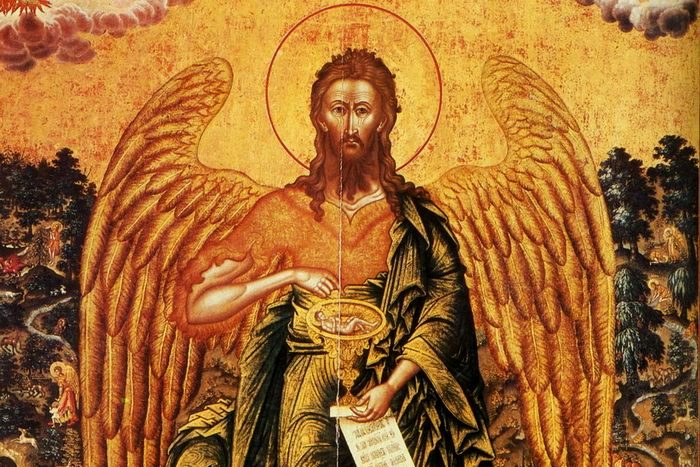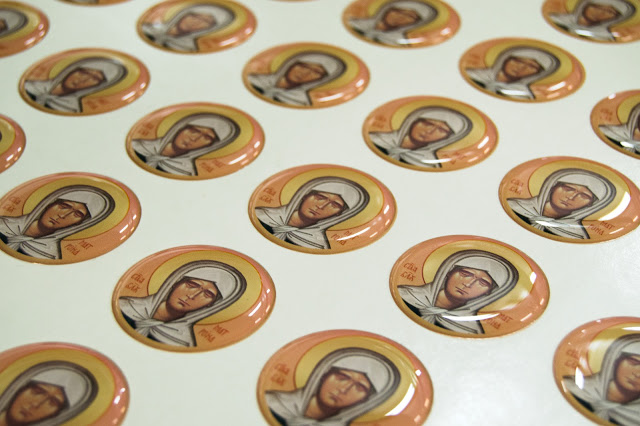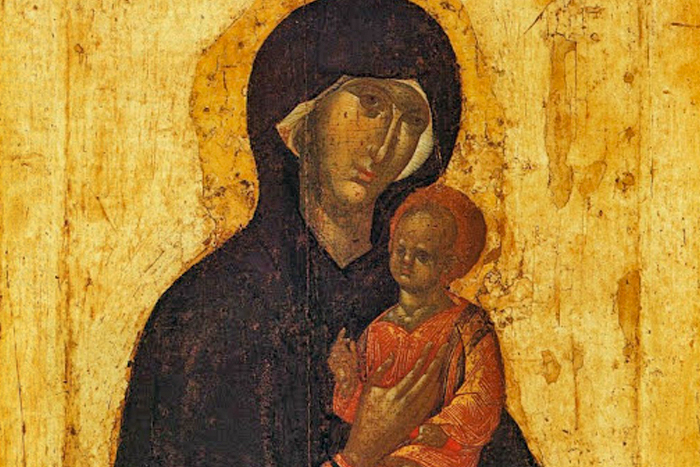
As well as “the Baptist”, John is also known as “glorious prophet and forerunner of Christ”. Therefore, the presence of the wings is to symbolize John’s status as a divine messenger (in Greek “Evangelos”, from where the word “Angel” is derived). It’s worth noting that the wings of the archangels (Gabriel, Michael etc.) in icons are largely symbolic too, as they are not specifically described as having wings in the Scriptures.
But if that were all, then why aren’t the prophets of the Old Testament, or the Apostles, shown with the angelic wings of divine messenger? The answer, in the words of Jesus Christ Himself, is because “among those born of women there is no one greater than John;” moreover, he is “the culmination and the crown of the prophets”, as the hymn from the feast of John’s nativity proclaims. Therefore, St John is an especial example among the Saints of an earthly “angel” and a heavenly man. As such, he is also described as the “Angel of the Desert” in the inscriptions of icons.

The life John led in the desert was angelic for two reasons. On the one hand he proclaimed the coming of the Messiah, Jesus Christ, becoming a herald of God like the angels. On the other, he lived a life of chastity, abstinence, and prayer, not being mindful of material needs, but with his attention fixed firmly to heaven. This is the life of the angels, and why the monastic way of life is sometimes called “angelic”, as well as why St John is the patron of monastics, hermits, and ascetics. For both reasons, it is appropriate to show St John with the spiritual wings of a dove.
She that once was barren now brings forth Christ’s Forerunner, John, the culmination and the crown of all the Prophets. For when he, in River Jordan, laid his hand on Him Whom the Prophets preached aforetime, he was revealed as God the Word’s fore-chosen Prophet, His mighty preacher, and His Forerunner in grace.


